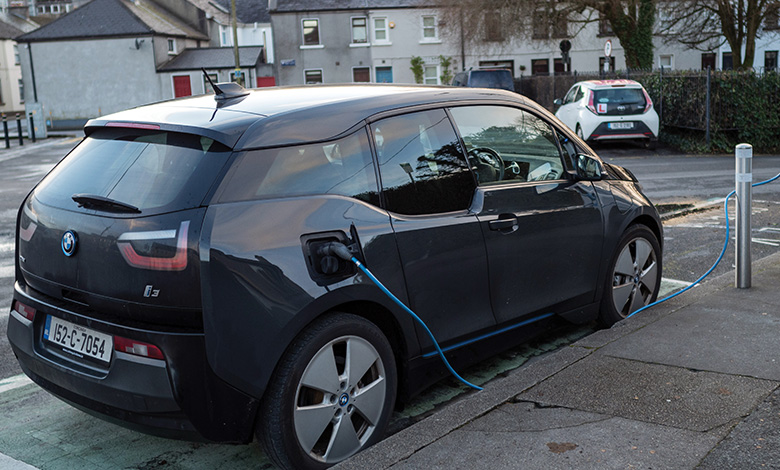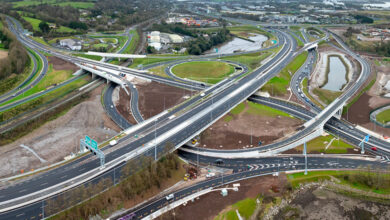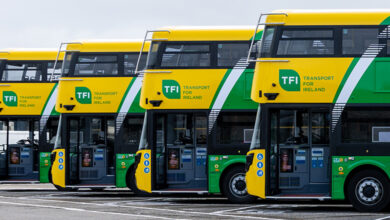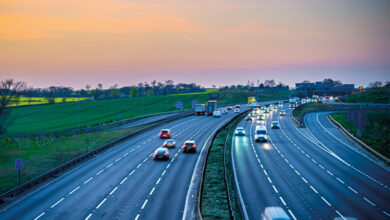Transport in a net zero future

Shane McDonagh, an International Energy Agency research analyst and former researcher at UCC’s MaREI, talks about the global transport sector in a net zero future.
Overall, McDonagh outlines that electrification is the main lever for reducing emissions in the transport sector.
“Technology performance such as efficiency improvements and behaviour measures are also important in the near term with hydrogen and hydrogen-based fuels becoming important levers after 2030,” he adds.
Electrification
According to McDonagh, rail is “fairly easy” to electrify and is “already electrified in many places”. “By 2050 over 90 per cent of rail lines will be electrified and the segment is almost fully decarbonised,” he says.
In addition, although the overall objective is to reduce car usage through better public transport and active travel enabled by better planning, McDonagh expresses optimism for the progress made in the transition to electric vehicles (EVs).
In a broader global context, in 2023 EVs accounted for 18 per cent of all car sales, up from 14 per cent in 2022.
McDonagh states that: “Beyond 2024, we see sales further increasing across the board, even as subsidies are progressively phased out like in China or several European countries.
“In China, EVs are relatively affordable, and there is still support at the regional and city level. In the EU, the increased CO2 emissions standards, backed by the Net Zero Industry Act and other legislation have increased ambition to 2035. In the USA, the Inflation Reduction Act (IRA) has set new incentives for carmakers to produce EVs in North America. Countries like Australia are now also setting ambitious CO2 standards which will drive EV sales.”
Shipping and biofuels
In shipping, biofuels are to be increasingly used, reaching about 20 per cent of fuel demand, but due to limits on sustainable biomass availability and competition with the aviation industry, McDonagh asserts that though much of the early progress has been made in methanol, ammonia could emerge as the most dominant low carbon emission fuel in 2050, meeting about 50 per cent of fuel demand.
“Hydrogen, which is not as well suited as ammonia or biofuels for long, transoceanic journeys, is used for shorter range coastal vessels. Hydrogen reaches 15 per cent of shipping fuel demand in 2050, and the other 15 per cent of fuel still comes from oil.”
McDonagh states that it looks likely that any low or zero carbon fuel suitable for shipping will be “more expensive than the fossil fuels currently used”.
“The adoption of low and zero carbon fuels is likely to require setting some form of price mechanism that aims at creating greater market equality.”
Changing behaviour
Although he acknowledges that behavioural change is an “important tool,” McDonagh says that “the scale of the effect [of behavioural change] though significant, can be easily overstated”.
“The vast majority of the heavy lifting comes from electrification, and in places where behaviour is key such as aviation, options like high-speed rail present an often better – or at least more palatable – approach than cutting flights.
“I believe many flights can be cut with little effect on people such as business flights, but in general modal shift is more effective. I think France’s law that prioritises trains over planes is a good example of this.”
“Reducing business travel and long-haul flights (over six hours flying time), predominantly in advanced economies, saves around 170 MtCO2e, or 40 per cent of the remaining emissions from this sector in 2050,” he says.
This also reduces demand for modern bioenergy by 1.5EJ, or 3 per cent, in 2050, which McDonagh analogises as “planting a land area roughly the size of Greece”.
Although 60 per cent of car sales being electric vehicles by 2030 is achieved in the IEA’s net zero emissions by 2050 scenario, four-out-of-five cars on the road are still internal combustion engines. In the net zero emissions by 2050 scenario, behavioural changes such as restricting the use of conventional vehicles in large cities cuts CO2 emissions from road transport by 15 per cent or 700 MtCO2e in 2030.
Achieving the necessary emissions reductions in end-uses without such behavioural changes would require “ramping-up low carbon technologies at even more staggering speeds”.
Concluding, McDonagh reiterates that the key to achieving a sustainable transport system which can support a net zero future remains electrification and its supporting infrastructure, with hydrogen and biofuels playing a large role in the medium to long term, all the while supported by the adoption of behavioural change.





